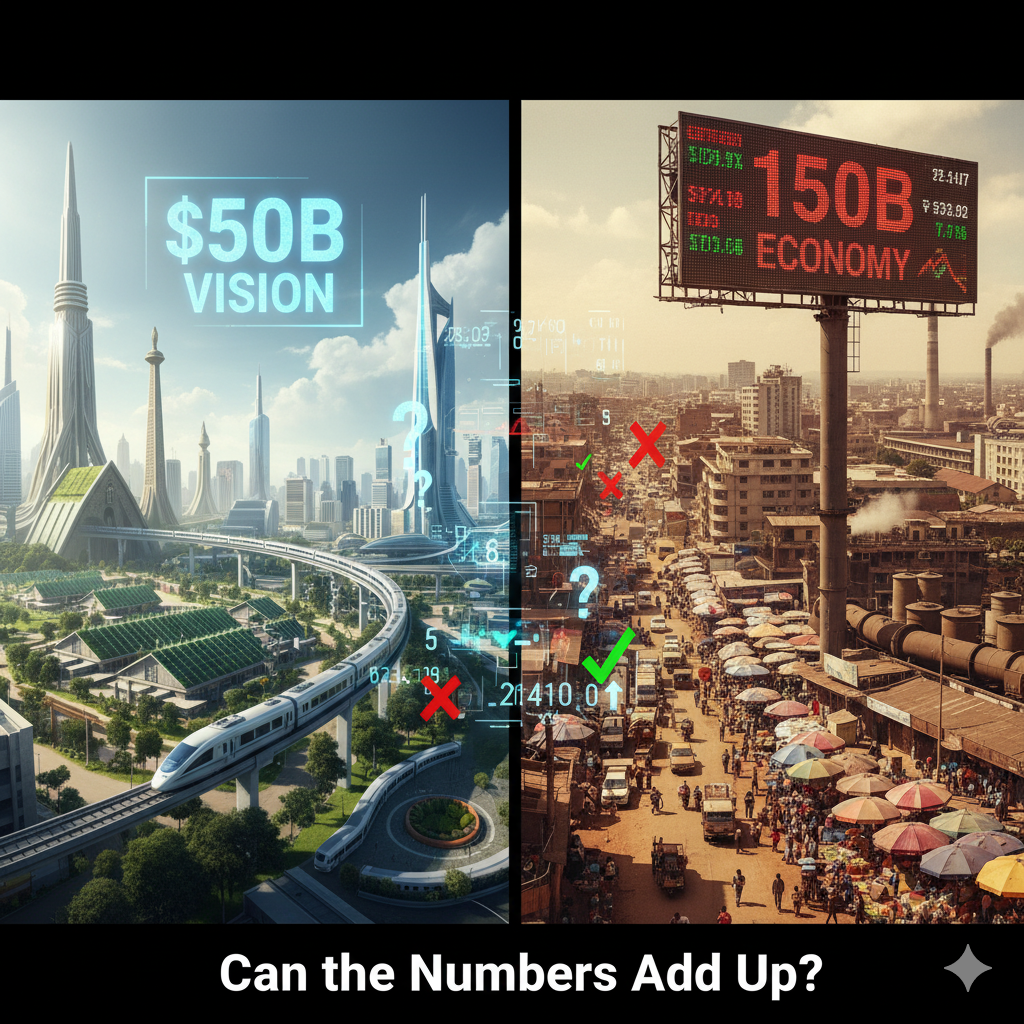Ethiopia’s $50B Vision Meets a $150B Economy: Can the Numbers Add Up?
Ethiopia’s $10B airport, $2.5B fertilizer venture, nuclear plans, and 1.5M housing units dwarf its fiscal space. With debt at 39% of GDP, reserves covering just 2.5 months of imports, and a euro-bond default unresolved, investors question if Addis’s mega-project pipeline is fiscal overreach.

Ethiopia’s government has unveiled a portfolio of mega-projects — a $10 billion Bishoftu airport, a $2.5 billion fertilizer plant with Dangote, a proposed two-reactor nuclear program, and a pledge to build 1.5 million housing units. On paper, the projects promise industrial transformation and self-sufficiency. But from a finance perspective, the credibility of the program depends on debt sustainability, investor sentiment, and access to concessional funding.
The macro backdrop is strained. Ethiopia’s GDP, at roughly $150 billion, grew 6% in 2024 but inflation remains elevated near 20% and the birr has depreciated more than 25% since early 2023. External debt is ~39% of GDP, while debt service now consumes about a quarter of government revenues. FX reserves cover barely 2.5 months of imports. The budget deficit sits around 4–5% of GDP, financed by domestic T-bills and multilateral support. Against this balance sheet, the scale of new commitments appears misaligned.
The flagship $10 billion airport alone is two-thirds the size of Ethiopia’s total FX reserves. While the African Development Bank has pledged $500 million, the remaining $8–9 billion would require syndications or bilateral lending, likely from Chinese banks or Gulf partners. The $2.5 billion fertilizer venture with Dangote (60% Dangote, 40% state) is more bankable given Ethiopia spends ~$1.2 billion annually importing fertilizers, but it hinges on timely delivery of a dedicated gas pipeline from Somali region fields. The nuclear plan is the least credible: two 1,200 MW units would likely cost $20–25 billion, dwarfing Ethiopia’s annual budget (~$15 billion). Housing ambitions are equally oversized: 1.5 million units at even $15,000 per unit implies ~$22 billion in capital outlay, well above Ethiopia’s financing capacity.
The credit market context makes timing awkward. Ethiopia defaulted on its $1 billion 2024 euro-bond last year and is in restructuring talks with the IMF and official creditors. The defaulted bond traded at yields >15% before suspension, implying a deep risk premium. Announcing new mega-projects without credible financing plans risks undermining restructuring negotiations and investor confidence. Ratings agencies already flag limited fiscal space; Fitch and Moody’s could interpret the announcements as fiscal adventurism rather than growth strategy.
Sectoral angles are mixed. Contractors such as Chinese SOEs are the likely beneficiaries of the airport project. Fertiliser import substitution could improve the current account by ~$1 billion annually once operational, a meaningful macro gain. But execution risks are high. Energy is more problematic: Ethiopia already stretched its balance sheet to complete the GERD hydro project, and nuclear ambitions appear more political signaling than financeable strategy.
Scenarios matter for investors. In a best case, concessional funding and PPPs advance the fertilizer project and pilot housing schemes, lifting GDP growth by 1–1.5 percentage points while trimming the import bill. In a base case, only fertilizer moves forward while the airport is delayed and nuclear shelved, keeping debt stable but growth subdued. In a worst case, multiple projects stall, sunk costs rise, IMF disbursements slow, and Ethiopia’s credit risk premium widens, delaying restructuring and limiting market re-entry.
For now, Ethiopia’s mega-project portfolio looks more like an aspirational blueprint than a financeable pipeline. Unless concessional partners underwrite large tranches and IMF support continues, investors will discount these plans as headline pledges. The lesson for the market is clear: without credible financing frameworks, Ethiopia’s growth narrative remains hostage to its balance sheet.





